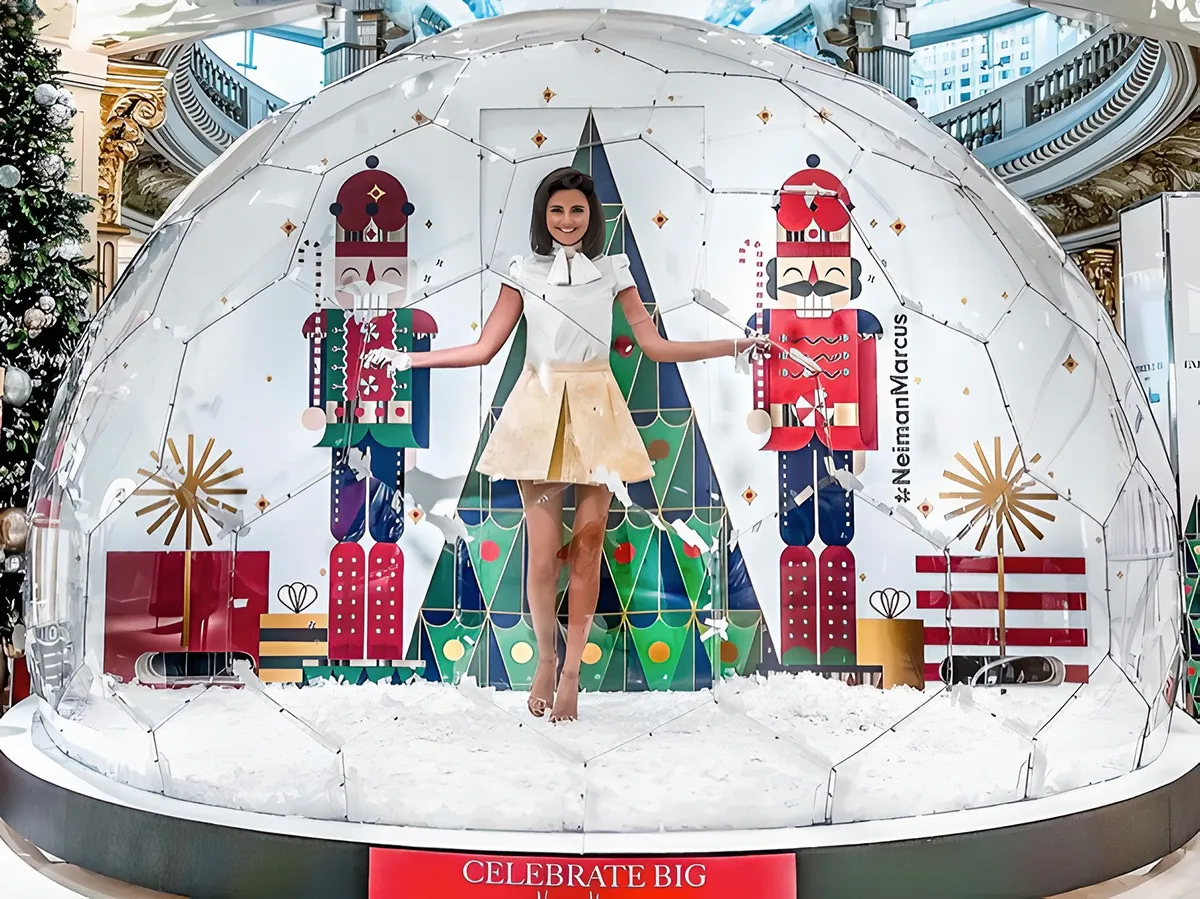We’re happy to be back with another addition of Hypedome Stories — the place to be when you want to see more of the wonderful ways Hypedome is being put to use around the world. This time we’re in the US, near Seattle, to talk to Shubert Ho, the CEO of Feedme Hospitality & Restaurant Group. He’s a proprietor with a big vision, a growing portfolio of eateries, and as you’ll learn, a knack for DIY. We sat down to talk to him about how dome dining is changing the way he serves his patrons at SanKai sushi restaurant.
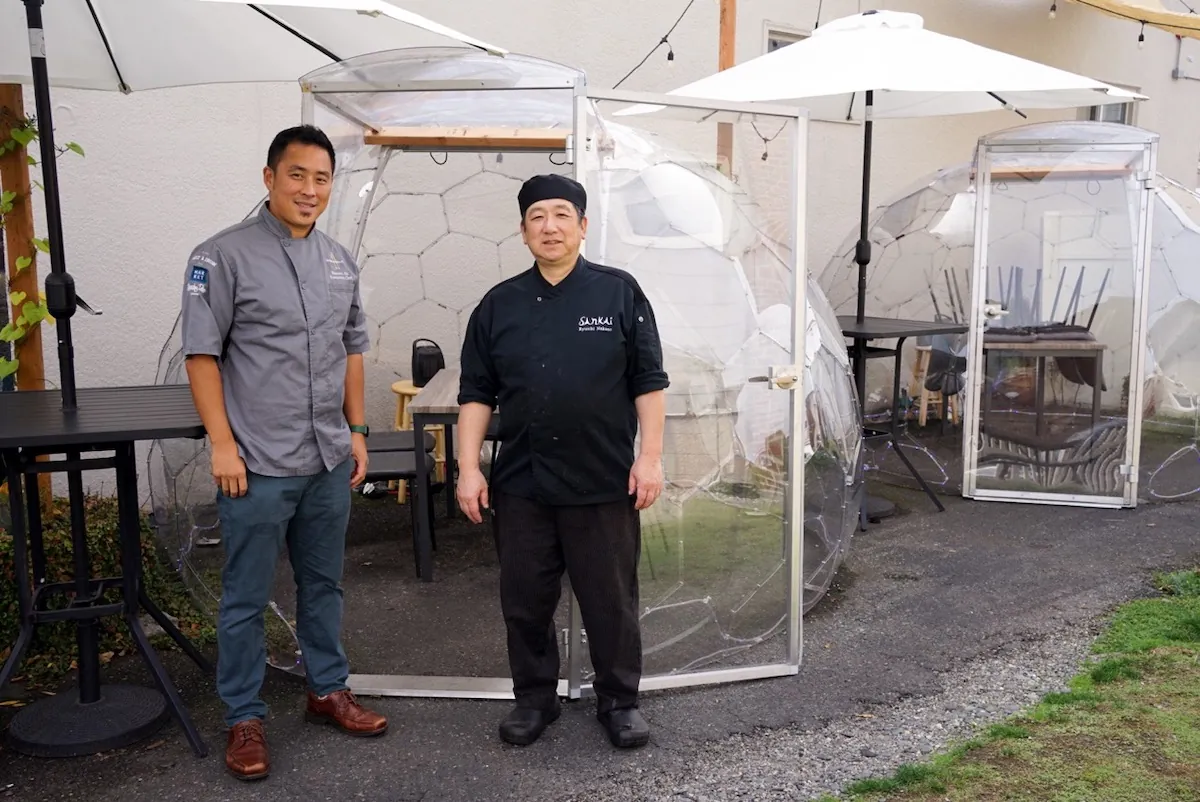
Shubert Ho with the chef Ryuichi Nakano at the SanKai Sushi restaurant.
Q: I gather you have quite the following in the Seattle area and have really helped revive the dining business in Edmonds. Could you tell us a little more about your journey to get here?
Shubert: It would be my pleasure. We started 16 years ago, with our catering company Shooby Doo Catering, and then eventually opened our first restaurant about 11 years ago with family partners, Bar Dojo. From then on every two years or so we opened another restaurant and just kept growing. Now we’re up to six restaurants and a coffee shop, with SanKai sushi restaurant being a key part of the group. We survived the pandemic and came out the other side even stronger because of our ability to adapt.
Q: COVID restrictions pushed a lot of owners to think about outdoor dining with renewed focus. How did you set about it?
Shubert: We didn’t have any outdoor dining in the colder months and that was a headache at first. There was a small amount of patio space on private property and we knew we needed to put something on it so our patrons could sit outside and enjoy their sushi. We had multiple kinds of outdoor heated spaces across our different restaurants, but SanKai sushi restaurant needed something to really stand out.
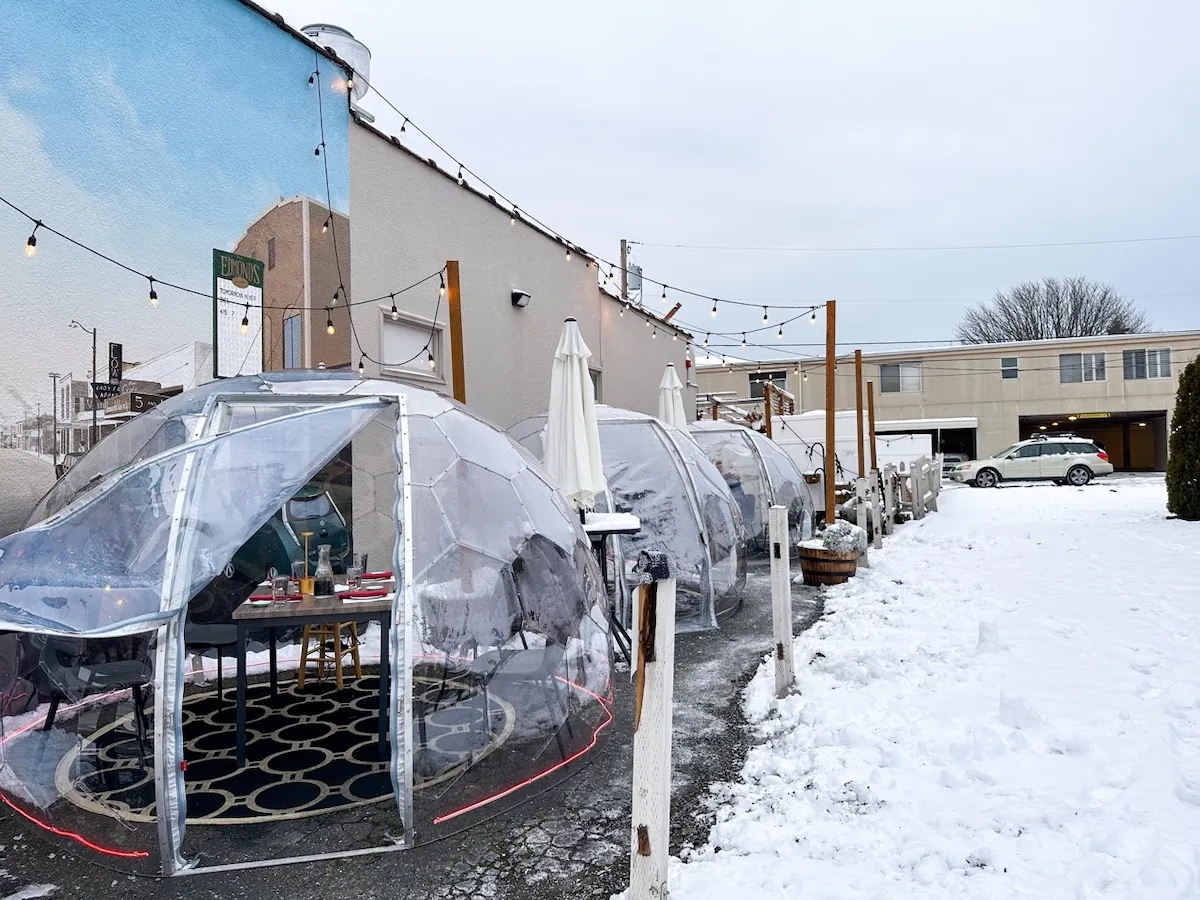
Q: What types of structure had you tried prior to finding Hypedome?
Shubert: Outdoor dining in Edmonds was a little haphazard at the time because of the sheer number of people trying to make it work while also trying to fit around our strict building regulations. I wanted to deliver a fine dining experience, not just a cover from the cold, so I put a lot of thought into it.
We had a thing called ‘the streateries’ where we built structures out of wood and plastic roofing materials, but that was only temporary. They were more like pergolas: rectangular structures. The problem with them was that it never really blocked any wind. It blocked the rain, but it still was really cold outside. Back in 2020, 2021, people were okay being cold, but it got old really fast in 2022. Nobody wanted to sit outside anymore, nobody wanted to be cold anymore. I needed more temporary units that could be assembled and disassembled whenever needed — we didn’t know if we had more than six months at a time with the permits. When we started looking for a suitable solution, Hypedome quickly stood out to us.
Q: And now you have three Hypedome Mini installed at the SanKai sushi restaurant. How was the installation process and how have they been received by your customers?
Shubert: We were the first in the whole area to have dining domes, so the Hypedome Mini became a really effective marketing tool for us in the beginning. I wanted dining domes I could erect myself and get things moving to keep my business going. The first one took me 12 hours to build with my facilities director, but by number three, I was down to just two hours!
Edmonds is a little town north of Seattle with a population of 42,000 people, but we get a lot of tourism because we’re by the sea. And so ever since we’ve installed our new dining domes they’ve generated a lot of interest and allowed us to utilise our outside dining space. It’s taken us from a 35-seater restaurant to one with 50% more coverage thanks to 16 outdoor seats. We have heaters there too.

I had to split a very tight space of ours with the neighbouring property which is why the Hypedome Mini size was so important to us. I worked with the city of Edmonds to allow these temporarily with re-inspection periods. Our building code is quite strict over here compared to a lot of other jurisdictions.
With the help of your sales associate, I was even able to do a little bit of retrofitting myself because the original openings were, I think 28 inches wide, and I needed them to be at least 32 inches. Again, this was all to comply with the strict regulations over here. Once I’d added the larger opening I found out the inspectors didn’t want zipper closures either, so I fitted magnets to the rollable doors instead. We ended up with something the inspectors ticked off and the customers loved.
Q: How has your DIY Hypedome been faring in the wind and rain Seattle so often serves up?
Shubert: We get about eight months of rain. It’s been fun though. I needed a door but options like the Port Door are designed for a bigger dome. What we did was retrofit* the Port Door to our Hypedome Minis with some adjustments like extra wood pieces to prop it up and extra vinyl to cover the space and openings. We’re able to use a large vinyl sheet and we drape it over the sides, that helps a lot. Hypedome can withstand strong winds of 70 mph with ease which is also really important when you’re running a restaurant in this part of the country. Any structure for outdoor dining in Edmonds needs to be able to stand up to the elements, that’s for sure!
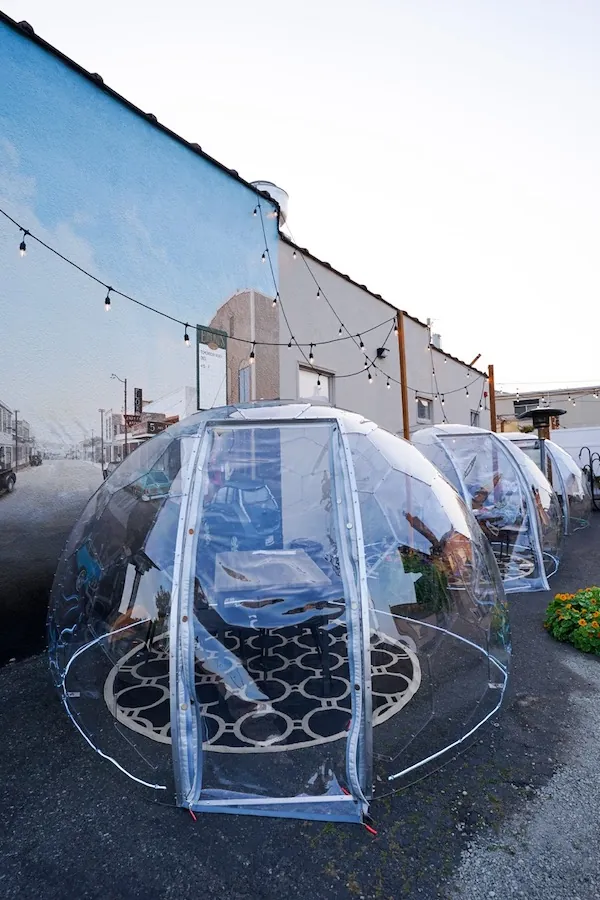
Shubert’s Hypedomes Mini before…

…and after his own DIY upgrade to Port Door.
When we were first searching for something professionally made we said it had to be a really rigid structure and not just PVC pipes with plastic draped over it. It had to be accessible to everybody, provide natural airflow (thankfully Hypedome does thanks to its fishscale design), and able to keep patrons warm in the depths of winter by retaining heat with a sealed structure. When I first saw Hypedome I thought ‘Wait a second, this is exactly what I’ve been looking for’. I saw the domes were being made over in Poland and I wanted to make sure I could buy them. Luckily you guys ship to the United States and it all worked out great.
Q: One last question: Do your guests prefer sitting in the dining pods or sitting inside the main restaurant?
Shubert: It depends on the person because the sushi bar features our business partner, Ryuichi Nakano. He is kind of the star of that bar because you want to sit in front of him — he’s gonna feed you sushi piece by piece. It’s his creativity that’s really the draw in there.
Lots of customers like to have their own private little banquet free from the distraction of other conversations, so they can relax and enjoy the ambience. With our pods, they can listen to some soft music that we provide via a speaker and it’s just a very personal space. Being able to offer such a choice is a big part of what I like about running a pod restaurant.
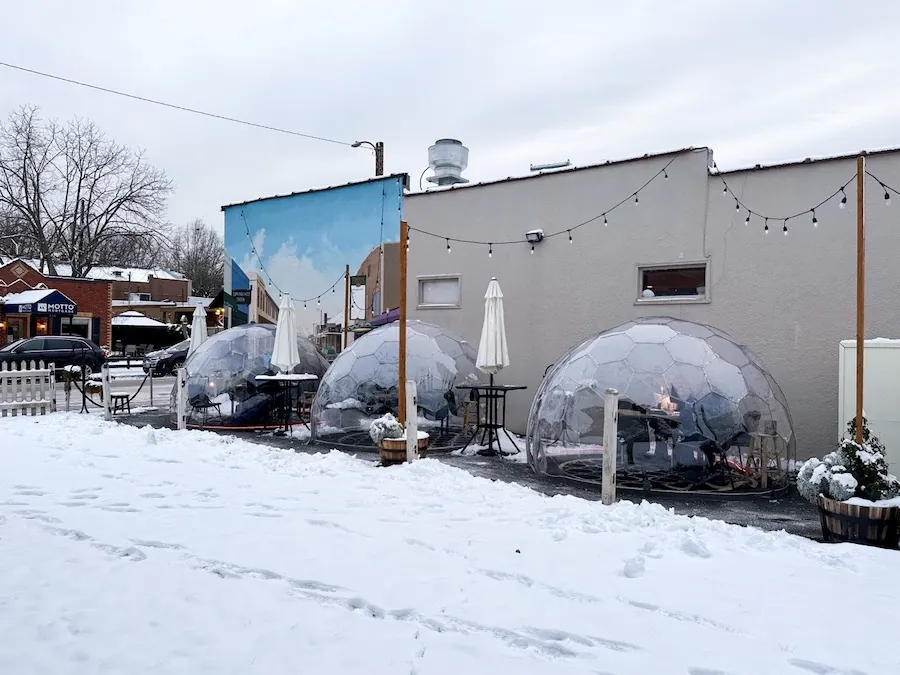
Great visiting Shubert and learning about how Hypedome has contributed to bringing innovation to outdoor dining in Edmonds. For a few more ideas on how eateries around the world are using Hypedome to attract additional alfresco dining guests, take a quick look at the Ye Olde Brigde Inn igloo restaurant when you have a couple of spare minutes. Enjoy!
* Disclaimer: The Port Door is not designed for Hypedome Mini. Shubert and his team successfully undertook a DIY retrofitting project to adapt the Port Door to their specific needs, but such custom modifications are not officially recommended by Hypedome and come with potential risks. Results can vary based on individual skills and circumstances. Hypedome advises customers to use only accessories designed for their specific dome model for safe and effective operation.

